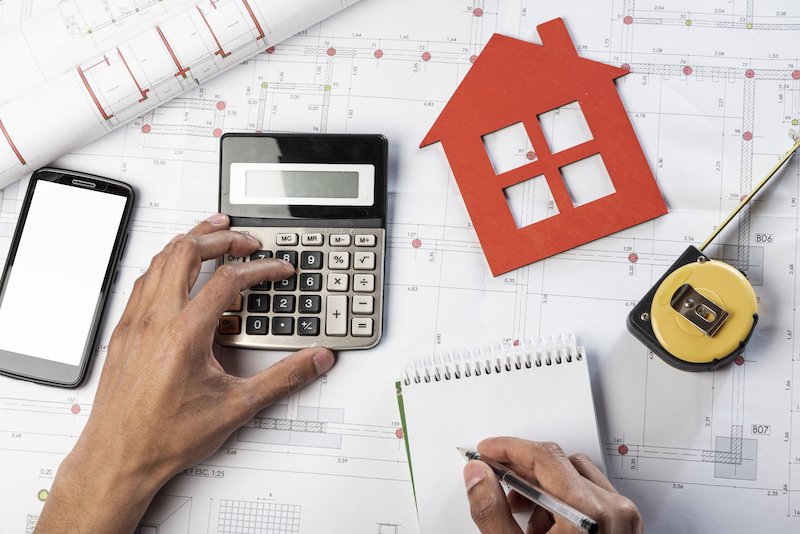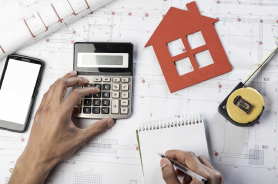
GST and the Build-to-Rent Model in Australia
The Build-to-Rent (BTR) model is an emerging and evolving residential housing model in Australia, attracting significant attention from developers, institutional investors, and government entities. Characterised by residential developments held for long-term rental, the BTR model provides an alternative to the traditional Build-to-Sell (BTS) market.
While BTR has gained momentum in markets like the UK and USA over the past decade, its potential in Australia is just beginning to unfold.
However, one of the major hurdles developers and investors face in the BTR model is GST treatment, which is substantially different from that accorded to BTS projects.
Background to the Build-to-Rent Model
This build-to-rent model is fundamentally different from the usual residential development approach in Australia. The BTR model involves the development of large-scale, purpose-tenanted residential complexes rather than their sale. Meanwhile, in a BTS project, the units are usually sold to either owner-occupiers or investors. In BTR, the properties remain in single ownership under an institutional investor or property developer and are leased out to tenants for long-term tenancy.
This, for example, is the case in the UK and the USA, where such a BTR development brings stability for the tenants, modern amenities, and professional management.
In Australia, as pressure on its private rental market increases due to the limited supply of housing, the interest in this particular BTR model is growing. Added to that, institutional investors are looking to BTR developments as one way of diversifying their portfolios.
Despite its potential, one of the most prominent barriers to the broad dissemination of BTR within the Australian context is the treatment of such projects under GST, increasing costs for the developers more than might otherwise be the case under the BTS model.
GST Treatment of Build-to-Rent (BTR) vs. Build-to-Sell (BTS) Projects:
Overview of GST in property development
GST is a value-added tax of 10% applied to most goods and services in Australia, including residential property transactions. Nevertheless, the treatment of GST in property development depends upon the type of project undertaken and whether the developer sells or leases the property.
The critical difference in GST treatment for BTR projects compared with BTS projects arises from the fact that letting residential property is considered to be an “input-taxed” activity for Australian GST purposes. This makes all the difference in the ability of the developer to claim GST credits for construction and other recurrent costs.
GST treatment in Build-to-Rent projects
Under the Build-to-Rent model, the leasing of residential accommodation is an “input-taxed” supply.
The GST implications for a developer in respect of a BTR project accordingly are:
- No GST credits on construction costs: The developers are not allowed to claim any GST credits on the construction costs incurred in building the BTR development. This obviously increases the overall project costs by an additional 10%, representing the GST that would otherwise be claimable in a BTS project.
- No GST on rental income: In view of leasing residential accommodation being an input-taxed activity, no GST would be charged on the rental income received from the tenants. This provides some solace in respect of cash flow from leasing operations, but it does not compensate for the inability to claim GST credits on construction and ongoing expenses.
- Limited registration requirements: If a developer’s only activity is leasing residential premises, they may be able to apply limited registration status for GST purposes, as leasing residential properties is an input-taxed supply. However, if the developer has other taxable activities, they will have to remain fully registered and not be able to claim any GST credits regarding BTR operations.
This GST treatment therefore poses a big challenge to BTR developers, since the inability to claim GST credits results in reduced cash flow and increased project costs. These two aspects are perceived to render BTR projects less feasible than their BTS development counterparts from the perspective of tax efficiency.
GST treatment in Build-to-Sell projects
The Build-to-Sell model embraces the development of residential properties for sale, either to owner-occupiers or to investors. In the case of GST treatment, there is more favour for BTS projects to the developers where the sale of new residential premises is classified as a taxable supply.
This classification provides a number of advantages for BTS developers:
- GST credits on construction costs: Under a BTS model, there would be the ability for a developer to claim GST credits for the construction and associated costs of developing new residential premises. These may be progressively claimed as the construction expenses are incurred, improving cash flow throughout a project’s life cycle.
- GST on supplies of new residential premises: Regarding the supplies of the new residential units, the sales represent the taxable supplies. Thus, the developer must charge GST on the sale price; however, this is usually factored into the ultimate sale price of the property so the developer is not out of pocket in respect to the GST.
- Timing of GST liabilities: Under the BTS model, GST is payable with respect to the sale of new residential premises upon the completion of the sale. This grants the developer better control over cash flow since the GST will be paid only after the sale of each unit and not during the actual construction.
The net result of claiming GST credits against building costs is that BTS projects are more financially attractive than BTR developments, for which no such credits can be claimed.
Implications for construction costs
In large measure, the construction costs are a major component of the total development cost in both the BTR and BTS models. However, the GST treatment of these costs differs dramatically between the two models.
Under the BTR model, no input tax credits would be claimed on construction costs by the developer to the extent that the leasing of residential premises is an input-taxed supply. Accordingly, a developer would need to bear the GST component of construction costs in effect, increasing the cost of construction by 10%.
This lack of ability to claim GST credits can certainly affect the overall viability of BTR projects, particularly in markets with tight margins. In budgeting for BTR developments, developers need to consider this additional cost, which could make such projects less competitive against BTS developments.
In contrast, BTS developments can claim GST credits for building costs because such developments are made in the course or furtherance of an enterprise for the purposes of sale as new residential premises, and thus the supplies are taxable. This is a great cash-flow advantage since developers can offset their own GST liabilities by claiming credit for the GST they pay on their construction expenses.
For BTS developers, the capacity to claim the GST credits makes the net cost of construction from their own pocket smaller, thereby easing the project’s financial management and making sure that the sale price upon completion of the project comes at full value, including the GST.
Implications for ongoing costs associated with leasing
Ongoing costs are those arising in the management of and maintenance of the property following completion. These also have varying GST implications depending upon whether the project is BTR or BTS in nature.
Since the supply of residential premises is input-taxed, any ongoing costs in respect of leasing the property, such as property management, repairs and maintenance, and utilities, cannot have any GST credits claimed for the BTR projects. The loss of those credits further increases the cost of operating a BTR development and makes the project less profitable overall.
In BTR projects, all the above-mentioned factors are to be considered ongoing costs for the developer if he is thinking of long-term leasing to ensure that rent obtained from tenancy is good enough to meet all the expenses and yield a reasonable return on investment.
For most BTS projects, the continued leasing costs would not be significant, since the developer’s interest is the sale of completed units. However, for a developer who temporally lets units before sale, the letting activities remain input-taxed and no GST credits would be allowed for costs pertaining to such letting.
Implications for the sale of property
The key distinctions between the BTR and BTS models concern the sale of residential property, but another important factor touching on the GST treatment of such sales remains an essential consideration for developers.
Generally speaking, properties within the BTR model are not for outright sale but are held for long-term leasing. However, the developers may decide in the future to sell either part or the whole of the property. According to the GST law, if a BTR property has been held as a rental property for more than five years, it is no longer considered “new” residential premises and hence not liable to GST when sold. This could be an added advantage for the developers holding the BTR properties for a long period, as the sale will not attract GST. On the other hand, if the developer sells the property within five years of its construction, the same sale would be considered a taxable supply and hence the GST would become payable on the sale price.
According to the BTS model, every sale of new residential premises would represent a taxable supply for which GST is required to be charged on the sale consideration. Developers would be entitled to claim GST credits for construction costs, as discussed earlier, but they have to ensure that appropriate GST on the sale of every unit is correctly applied. The fact that BTS property sales are taxable would ultimately imply that a developer needs to consider and account for GST charges while determining the sale price of the units, ensuring that it covers the cost of the development and the incidence of GST.
The different GST treatment between BTR and BTS projects makes a world of difference to the developer or investor and the broader property market. BTR may bring some theoretical benefits in terms of long-term stable rental income and more stable tenants, but the nonavailability of claims on GST credits on construction and ongoing costs makes such developments considerably more complicated.
For developers and accountants involved in property development, understanding the nuances of GST treatment is critical for planning, cost management, and ensuring project feasibility. Keeping up with these complex tax implications is essential for professionals seeking to optimise financial outcomes, and engaging in CPD for accountants can help in staying informed about such evolving issues. Additionally, attending a CPD points webinar on GST or property tax could provide valuable insights into the practical application of these rules, ensuring that developers and advisors are well-equipped to navigate the challenges of the BTR model.




